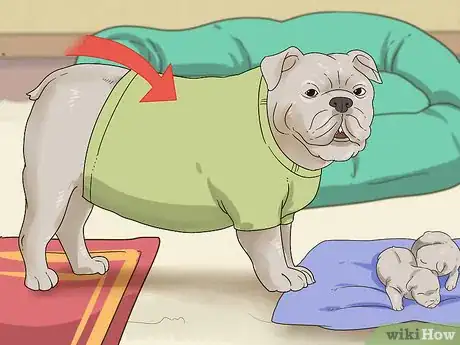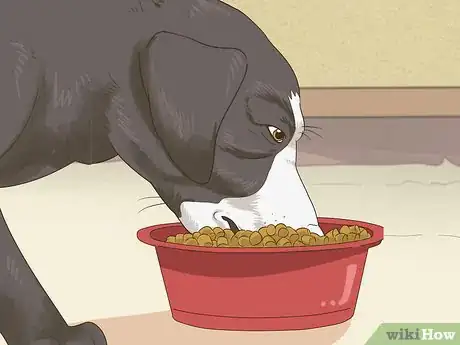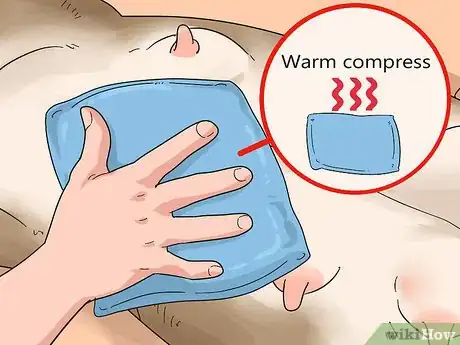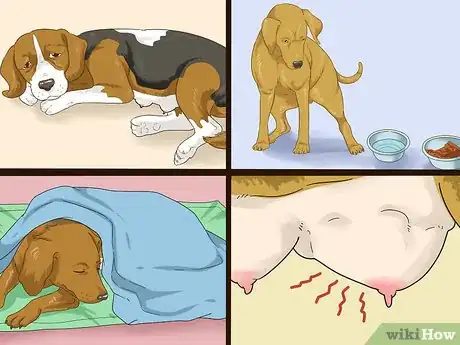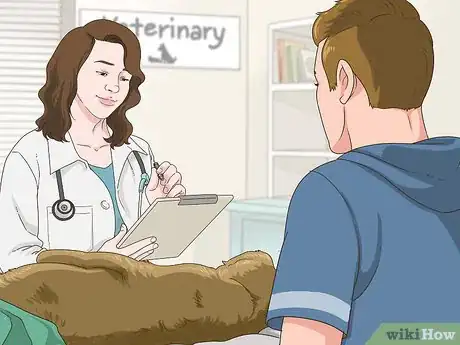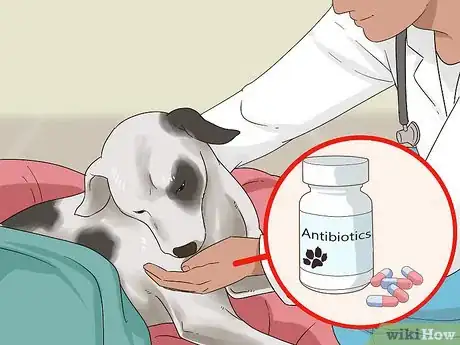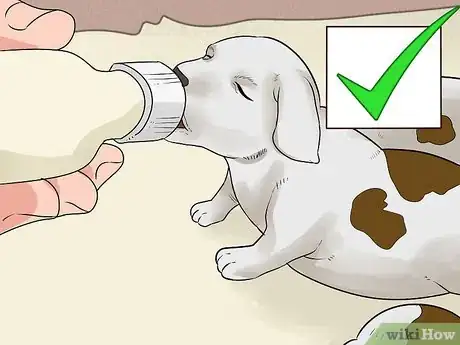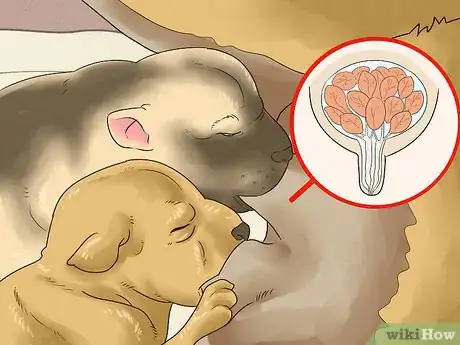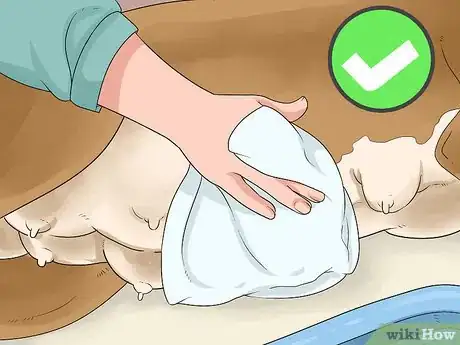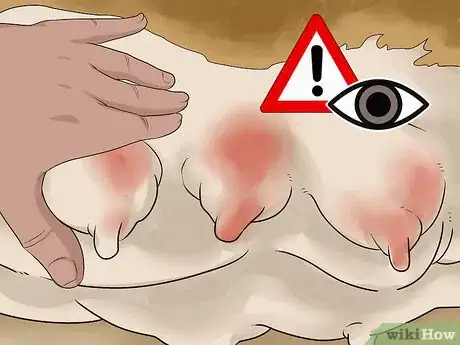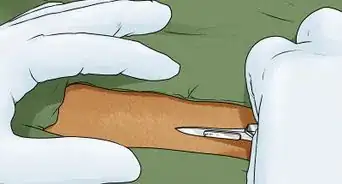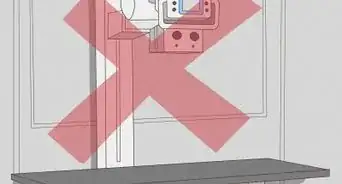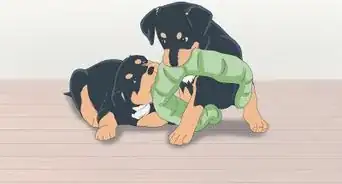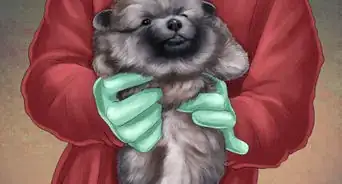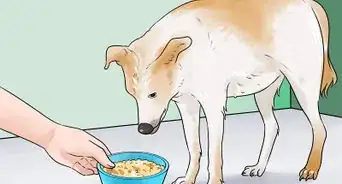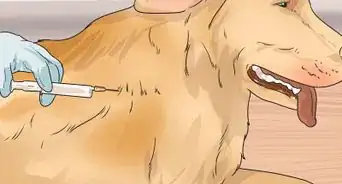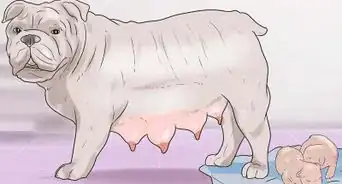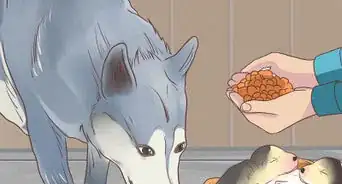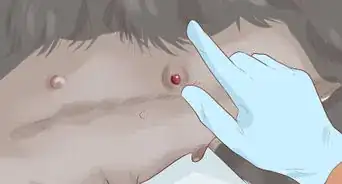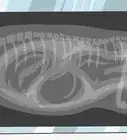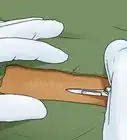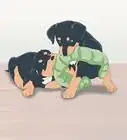This article was co-authored by Melissa Nelson, DVM, PhD. Dr. Nelson is a Veterinarian who specializes in Companion and Large Animal Medicine in Minnesota, where she has over 18 years of experience as a veterinarian in a rural clinic. She received her Doctor of Veterinary Medicine from the University of Minnesota in 1998.
This article has been viewed 104,433 times.
When a mother dog is nursing a lot of puppies there is a chance that her nipples will get sore or infected. This can be detrimental to the mother but it can also impact the health of her puppies. If she does not allow the puppies to nurse due to pain or discomfort, then they can suffer. With this in mind, it is important to be proactive about caring for sore or infected nipples on your nursing dog.
Steps
Caring For Sore Nipples
-
1Make sure that the mother's nipples are used equally. In order for nipples to stay in good shape, they should be used but not abused.[1] A nipple that is overused can get irritated and sore rather quickly. To help alleviate this soreness and help the nipple recover, make sure the puppies are using all nipples equally.
- However, a nipple should not be completely abandoned indefinitely. They need to be used to avoid an infection in the ducts.
- Positioning puppies away from a sore nipple can be difficult. You will need to keep a close eye on the puppies and mother at all times.
- Try placing puppies further away from the affected nipple so that they will use the other nipples first.
-
2Cover nipples between feedings. If your mother dog is crawled on and active with her puppies between feedings, her nipples may be getting irritated unnecessarily. The puppies’ nails may scratch and irritate the mother’s nipple areas. Instead of letting this occur, try putting a dog shirt or sweater on the mother between feedings in order to protect her nipples.
- This will allow the mother to remain with her puppies while not allowing them to injure her further.
- Remember that you will need to remove the clothing off the mother dog for the puppies' feedings, which will depend on the ages of the puppies.
Advertisement -
3Feed the mother dog properly. If a mother dog is not fed properly she will not produce enough milk for her puppies.[2] In turn, as the puppies try to get milk that is not there, they will irritate the mother dog's nipples more and more.
- If your mother dog is getting irritated nipples, you should assess the mother's nutrition, such as by ensuring that she is eating a nutritious food like puppy food. You should also assess the development of the puppies, such as by weighing them daily. This can help you determine if the mother is producing enough milk.
-
4Apply warm compresses. If your mother dog's nipples are irritated, a warm compress may ease some of her discomfort. Make sure that the compresses are not too hot by placing them on your skin to see if the temperature is comfortable, as this can burn the dog's nipples and injure her further.[3]
- Do not apply lotions or ointments. While it can be tempting to apply something to soothe the mother's nipples, anything you apply to them will go straight into the puppies' systems and could make them seriously ill. With this in mind, avoid introducing a foreign chemical into the puppies' bodies even if you are just trying to ease the discomfort of the mother.
Caring For Infected Nipples
-
1Identify infections. There are several types of infections that a nursing dog can get that can affect nursing. One of the most common is mastitis, which is an infection of the milk ducts. This occurs due to blocked milk ducts or swelling in the teat.[4] Signs that the mother dog has mastitis include:
- Lethargy
- Fever
- Lack of appetite
- Firm and swollen teats
- Puss coming from nipples
- Refusal to let puppies nurse
- Failure of puppies to grow
-
2Take the mother dog to a veterinarian. Don't assume that the infection will go away on its own. If you leave even a slight a nipple infection to clear up on its own it can become a very serious infection.[5]
- The veterinarian will ask you about the dog's symptoms and he or she will do a physical exam to assess the mother dog's health.[6]
- Remember that getting veterinary care is important for the health of the mother dog and the health of the puppies.
-
3Treat the infection. It is likely that the veterinarian will suggest putting the mother dog on antibiotics to clear up the infection. Additionally, the infected area may need to be opened and drained if the infection is severe.[7]
- In the case of a mild case of mastitis, the vet may suggest applying warm compresses to the teats four to six times a day.
- A mother dog with a serious infection will go on antibiotics but may need additional care at the veterinary office. If the infection has spread to other places in her body or is causing her system to shut down she may need to be put on an I.V. and watched by veterinary professionals.
- Discuss the fact that the antibiotics will be passed on to the puppies when discussing the treatment with your veterinarian. This may affect the type and quantity of antibiotics used.
-
4Care for the puppies in the mother's absence. If the mother dog cannot nurse her puppies, then you will need to provide them with food. Only give them food that is formulated for puppies or you may make them sick. There are formulas made specifically for newborn puppies that can be bought at most pet stores or online. You will also need to keep the puppies warm, as the mother gives them a lot of body heat.
- Newborn puppies need to be fed every two to three hours around the clock. This means that nursing them will be a big job for you to take on.
Preventing Sore or Infected Nipples
-
1Make sure all nipples are used for nursing. It is good for the mother dog if her puppies nurse on all of the nipples. This will spread the wear on the nipples around equally and will use all of her mammary glands, which reduces the risk of her ducts getting blocked.[8]
- If necessary, move the puppies around while they are nursing to use all of the mother's nipples. Puppies may naturally be drawn to certain nipples, especially the ones that give more milk, so you will need to intervene if you are concerned with the chance of an infection.
-
2Keep the mother's nipples clean. Poor hygiene can promote infections and irritation of the nipples. If the mother is not adequately cleaning her nipples after nursing, then you should assist her.[9]
- If you see the mother licking her nipples after nursing, then she is taking care of the nipple hygiene herself.
- If she is not licking the nipples after nursing, you can use a warm, clean, damp cloth to wipe down the area. This should feel good to the mother dog in addition to keeping her nipples clean.
-
3Look for signs of sore nipples. If a mother dog is beginning to get sore nipples you should help alleviate the discomfort before they become really sore or infected. Look for signs that the mother is hesitant to let her puppies nurse. Also, inspect the mothers nipples for unusual redness or sensitivity.
- If you see that a nipple is getting red and sensitive, try to keep puppies off of it for a feeding cycle. Apply a warm, moist compress to the nipple and make sure the nipple is clean. Then you can let the puppies back on it.
-
4Look for trauma on the nipples. Infections and irritation can be caused by trauma the puppies inflict while they are nursing. This is especially a risk factor once the puppies begin getting their baby teeth.[10]
- If you see trauma on a nipple, such as a small cut, try to persuade the puppies to nurse from another nipple. Treat the nipple trauma under the direction of a veterinarian, as anything you apply to the nipple could be passed on to the puppies.
References
- ↑ http://www.merckvetmanual.com/reproductive-system/reproductive-diseases-of-the-female-small-animal/mastitis-in-small-animals
- ↑ http://www.akc.org/content/dog-breeding/articles/the-care-and-feeding-of-the-breeding-bitch-part-two/
- ↑ http://www.merckvetmanual.com/reproductive-system/reproductive-diseases-of-the-female-small-animal/mastitis-in-small-animals
- ↑ http://www.dogbreedinfo.com/breedingdogs/mastitisindogs.htm
- ↑ http://www.petmd.com/dog/conditions/endocrine/c_dg_mastitis
- ↑ http://www.merckvetmanual.com/reproductive-system/reproductive-diseases-of-the-female-small-animal/mastitis-in-small-animals
- ↑ http://www.merckvetmanual.com/reproductive-system/reproductive-diseases-of-the-female-small-animal/mastitis-in-small-animals
- ↑ http://www.petmd.com/dog/conditions/endocrine/c_dg_mastitis?page=2
- ↑ http://www.merckvetmanual.com/reproductive-system/reproductive-diseases-of-the-female-small-animal/mastitis-in-small-animals

